|
observer |
|
|
|
|
|
OTHER LINKS |

|

|

|
Glimpse of History from ANCL ArchivesANCL Press : From Letterpress printing to off-set Lithography
|
||||||||
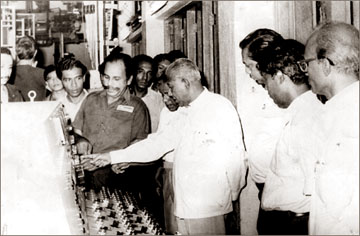 Chairman Ranapala Bodinagoda, Lankanath de Silva, Director Operations and Sumana Gomes, General Works Manager at the commissioning of the Press |
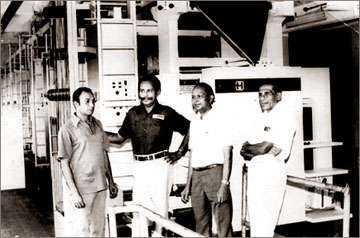 L-R Tony Peiris (Assistant Press Manager), Kingsely Fernando (Press Manager), M. T. Ramzjan (Assistant General Manager),Sumana Gomas (General Works Manager) |
The history of the Press at Lake House goes back as far as 150 years and the first printing press that churned out copies of 'The Observer' by Relief Printing or the Letter Press as the process was then known. Then, the printing process gradually changed over to planographic printing or lithographic printing before the advent of off-set printing and now the computer-aided press.
Although little has been mentioned about the press, over a period of hundred years the printing press at the ANCL, though it had undergone changes from time to time, has been recording the pulse of the nation and turning the news and features into a marketable good in the form of newspapers.
According to records, at the time the "Observer" was brought over from an Englishman by the founder D.R. Wijewardena, it was, originally, printed on the sheet-fed Double-feeder Press.
Earlier the composing process of the 'Observer' had been done by the compositors manually. D. R. Wijewardena mechanised the process with the introduction of Linotype slug casting machine. He also trained Sri Lankans as Linotype Operators in Calcutta to man the machines.
The Press at Lake House underwent many changes from the Linotype composing modules to the Goss Uni-Tabular Rotary Press which was capable of printing three newspapers simultaneously.
The Printing Press and the Production Department not only marked milestones in the printing industry in Sri Lanka, but also created a lot of memorable personalities and many company-lores.
It will continue to record and inform the public of the news, current affairs and of course, features, thus enriching the collective memory of the nation.
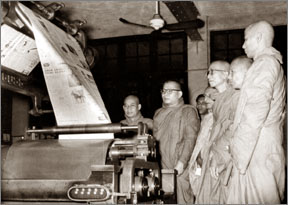 |
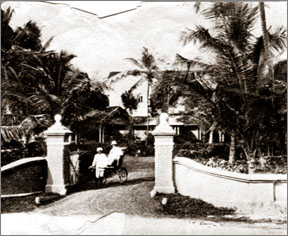 Plaster House, the house in Kollupitiya where the press was once situated |
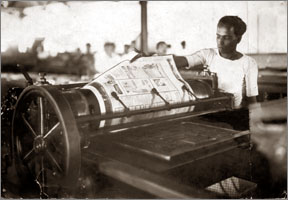 |
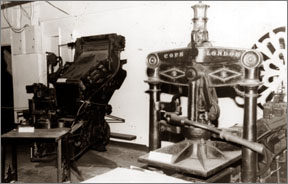 |
|
The early printing presses |
|







